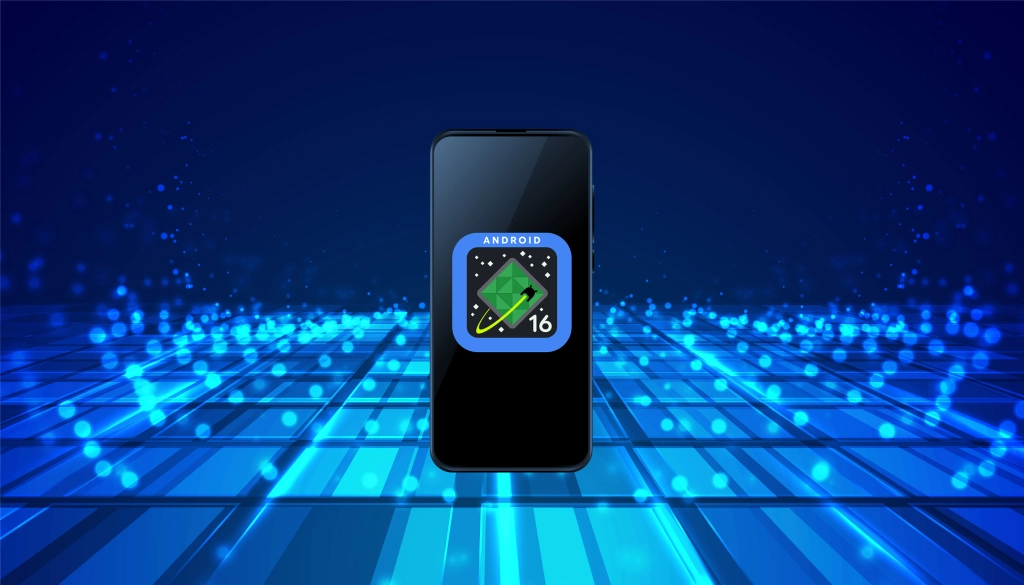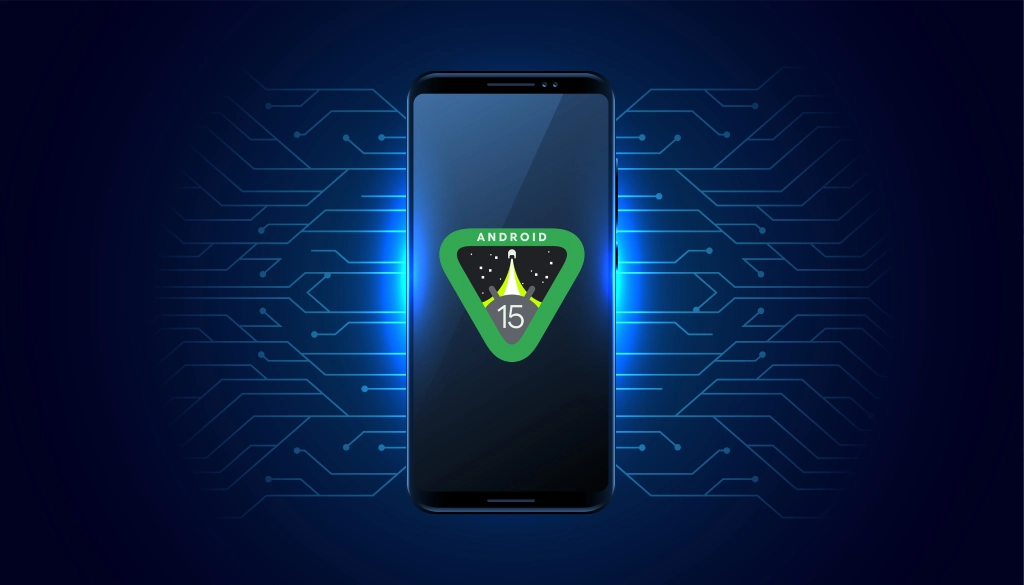Table of Contents
ToggleEverything around us is advancing and Android is no exception. As 2025 approaches, “Vanilla Ice Cream” or Android 15, which has been in the news for quite some time, will be the center of attention for technophiles worldwide. The Android 15 was officially released with the Google Pixel devices on October 15, 2024, and it is the 15th major release and 22nd version of this mobile operating system updates.
Now, In this guide let us examine the remarkable Android 2025 upgrades, new features, improvements, and Android 16’s teasers.
Android 15: Overview and Release Timeline

Android 15 was first made known with a developer preview on February 16, 2024, and Google didn’t stop there; they kept us engaged with incremental improvements and constant updates with the first beta dropping on April 11, 2024. Developers had their opportunity to test the system on September 3, 2024, when the final source code was made available alongside the rest of the developers.
system on September 3, 2024, when the final source code was made available alongside the rest of the developers.
Release Schedule
Below is the table that provides you with a detailed breakdown of the release type along with their respective release dates for Android 15.
| Release Type | Release Date | Emulator Support | Google Play Services |
| Developer Preview 1 | February 16, 2024 | x86 (64-bit), ARM (v8-A) | – |
| Developer Preview 2 | March 21, 2024 | x86 (64-bit), ARM (v8-A) | – |
| Beta 1 | April 11, 2024 | x86 (64-bit), ARM (v8-A) | 24.39.34 |
| Beta 2 | December 16, 2024 | x86 (64-bit), ARM (v8-A) | 24.45.32 |
| Beta 2.1 | January 9, 2025 | x86 (64-bit), ARM (v8-A) | 4.45.32 |
| Beta 3 | January 21, 2025 | x86 (64-bit), ARM (v8-A) | 24.45.32 |
Android 15 Features: What’s New?
With Android 15, Google has focused on increasing the overall user experience by introducing various improvements in privacy, performance, and user interface changes.
Below we are providing you the complete Android 2025 improvements and what sets Android 15 apart from previous versions.
1. Privacy and Android Security Enhancements
Android 15 focuses heavily on improving user privacy and Android security enhancements by implementing stricter protocols and providing better control over data management. These enhancements ensure a more reliable and trusted user experience.
- Privacy Sandbox on Android: Android 15 integrates the latest Privacy Sandbox which reduces cross-app tracking while making sure that advertising becomes even more relevant. This increases privacy for users. Android features 2025 also creates a safe space for personalized advertising by providing developers with privacy-targeted APIs
- Automatic Language Switching Refinements: An improved multi-language recognition system allows developers to control how language switching occurs during audio sessions. This enhancement provides more efficient language detection and limits unnecessary switching, which contributes to a more smooth and secure user experience.
- App Screen Sharing: Android 2025 improvements enable users to share or record specific app windows rather than the entire screen, offering better control over what content is being shared. This feature increases privacy during presentations or collaborations by ensuring that only the intended content is visible.
- Enhanced Security Measures: Transparency and data protection have received a boost with the introduction of new protocols. Enhanced authentication systems, malware protection, and improved permit management ensure that the applications are highly protected and can withstand modern attacks.
- In-App Camera Controls: Android 15 provides enhanced control over camera hardware and algorithms. Features like precise flash strength adjustments help developers provide a more consistent and secure experience when using camera functionalities, especially in low-light conditions.
2. Android Performance Improvements
Android 15 introduces several key enhancements aimed at improving overall system performance, resource management, and Android app compatibility across various devices. These changes are particularly beneficial for resource-intensive apps and games.
- Android Dynamic Performance Framework (ADPF) Updates: The Dynamic Performance Framework on Android has been upgraded to improve resource management on games and other resource-heavy applications. Developers can cut down processes running in the background with the aid of power-efficiency modes. Better collaboration of the GPU and CPU coordination also results in better performance across varying workloads. Also, the device’s longevity and efficiency is increased with the addition of thermal headroom thresholds which indicate possible thermal throttling.
- Low Light Boost: Working to improve the performance of cameras in poor light scenarios, the real-time improvements made to the preview stream Low Light Boost offers help preview streams in real-time. Unlike normal night modes which achieve low light performance through image stacking, this feature generates enhanced preview images which are more useful when scanning QR codes and recording videos or photographing in low light conditions.
- Support for 16 KB Page Sizes: Android 15 adds support for 16 KB page sized devices, to improve memory management and performance. Mobile app developers working in native code are advised to adjust their applications to a 16 KB environment for better performance and Android app compatibility across devices.
3. User Interface Changes in Android
Android 15 brings a series of UI improvements that increase the user experience by making interactions smoother, visuals more appealing, and usability more streamlined.
- Edge-to-Edge Enforcement: For applications targeting the 15th version, Android 15 enables edge-to-edge rendering by default. This is helpful for immersive experience with modern devices having curved displays or notches. Developers should take care that UI components are positioned in such a way that is does not get masked out by system navigation gestures or your device cutouts so as to not spoil the appearnace of the application.
- PNG-Based Emoji Font Removal: Android 15 uses a vector-based font for emojis. This contour maintains, and ensures clarity, uniformity, and Android app compatibility over different screen resolutions and gives out a more appealing experience.
Upcoming Android 16: What’s Next?

Google is not resting on its laurels. The company has already released the first developer preview of Android 16, internally codenamed “Baklava”, on November 19, 2024. With the first beta released on January 23, 2025, developers are eagerly exploring its features.
Upcoming Features in Android 16
| Feature | Description |
| Ambient Volume Controls | Adjust ambient sound volume for LE Audio hearing aids. |
| Accessibility APIs | Improved UI semantics for better accessibility support. |
| UltraHDR Support | Adds UltraHDR images in HEIC format. |
| Color Adjustment | Enhanced camera controls for color temperature and tint. |
| Vertical Text Rendering | Supports vertical text for better compatibility. |
| Photo Picker Enhancements | Embed photo picker in apps and enable cloud search. |
| APV Codec | High-quality professional video recording support. |
| Privacy Sandbox | Improved privacy protection framework. |
| Key Sharing API | Share Android Keystore keys between apps. |
| Predictive Back | Smooth back animations and task management improvements. |
Android 16 Release Timeline
| Timeline | Build |
| November 19, 2024 | Developer Preview 1 |
| December 18, 2024 | Developer Preview 2 |
| January 23, 2025 | Beta 1 |
| February 13, 2025 | Beta 2 |
| March 13, 2025 | Beta 3 |
| April / May 2025 | Beta 4 |
| June 2025 | Final Release |
How AlphaKlick Solution Can Help You Build Modern Android Apps?
At AlphaKlick Solution, we stay ahead of the curve by continuously upgrading our expertise with the latest Android updates March 2025. Whether you want to develop an Android mobile app from scratch or improve your existing application to support Android 15 and Android 16 features, our experienced team of mobile app developers ensures you get the most out of the latest Android advancements.
From using Privacy Sandbox and Dynamic Performance to implementing Adaptive Apps and Live Updates, we create mobile apps that are not only feature-rich but also user-centric and highly secure.
If you are looking to build a cutting-edge Android mobile app? Then you can contact AlphaKlick Solution today to discuss your requirements and bring your vision to life!
Android 2025: A Promising Year for Innovation
According to the reports, approximately 4.51% of Android devices run Android 15 on March 2025. With new features like Android Dynamic Performance, Low Light Boost, and Privacy Sandbox, Android 15 has set a high standard for mobile operating system updates.
Meanwhile, Android 16 promises even greater Android 2025 features with cutting-edge technologies and features. Google’s dedication to increasing mobile app performance, privacy, and user experience continues to pave the way for innovation.
With each release, mobile app developers and users alike gain access to Best Android Apps 2025, optimized for the latest versions of the mobile operating system updates. As the world eagerly awaits the New Android release, Google’s commitment to continuous improvement ensures a brighter future for mobile technology.




















